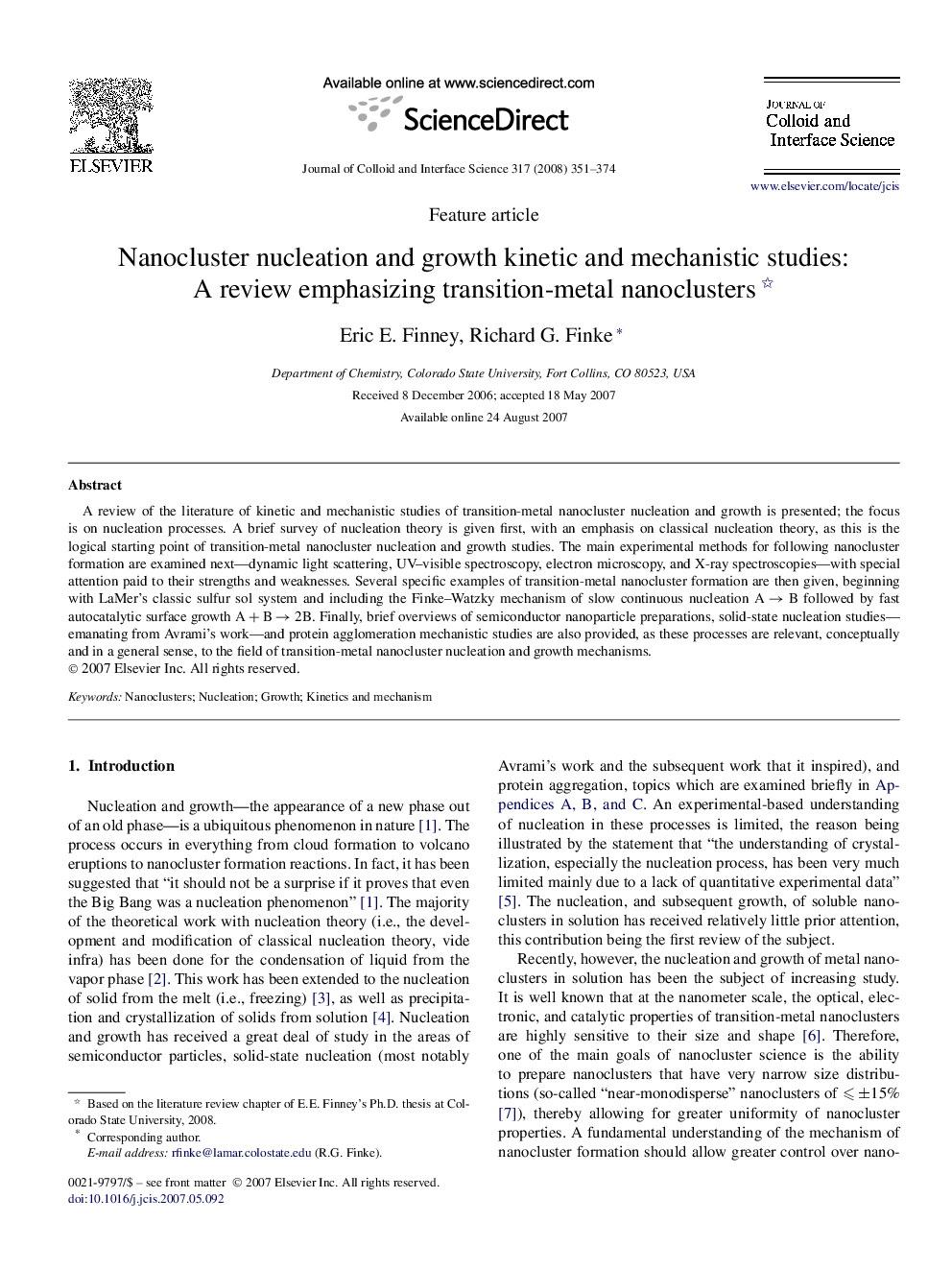| Article ID | Journal | Published Year | Pages | File Type |
|---|---|---|---|---|
| 611736 | Journal of Colloid and Interface Science | 2008 | 24 Pages |
A review of the literature of kinetic and mechanistic studies of transition-metal nanocluster nucleation and growth is presented; the focus is on nucleation processes. A brief survey of nucleation theory is given first, with an emphasis on classical nucleation theory, as this is the logical starting point of transition-metal nanocluster nucleation and growth studies. The main experimental methods for following nanocluster formation are examined next—dynamic light scattering, UV–visible spectroscopy, electron microscopy, and X-ray spectroscopies—with special attention paid to their strengths and weaknesses. Several specific examples of transition-metal nanocluster formation are then given, beginning with LaMer's classic sulfur sol system and including the Finke–Watzky mechanism of slow continuous nucleation A→BA→B followed by fast autocatalytic surface growth A+B→2BA+B→2B. Finally, brief overviews of semiconductor nanoparticle preparations, solid-state nucleation studies—emanating from Avrami's work—and protein agglomeration mechanistic studies are also provided, as these processes are relevant, conceptually and in a general sense, to the field of transition-metal nanocluster nucleation and growth mechanisms.
Graphical abstractA review of transition-metal nanocluster nucleation and growth is presented with attention given to the nucleation process. Key studies and insights from the literature are provided, with a look toward needed future studies.Figure optionsDownload full-size imageDownload as PowerPoint slide
